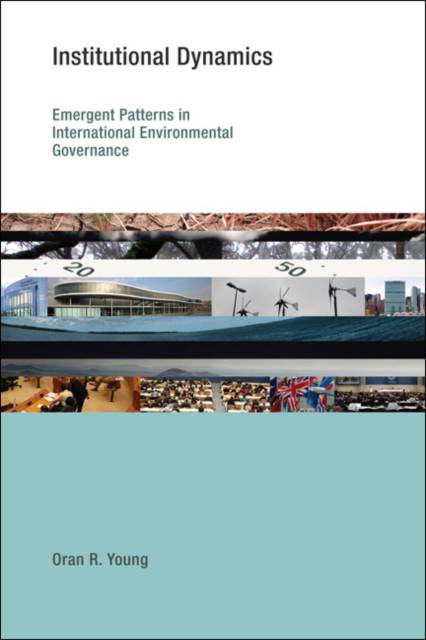
- Retrait gratuit dans votre magasin Club
- 7.000.000 titres dans notre catalogue
- Payer en toute sécurité
- Toujours un magasin près de chez vous
- Retrait gratuit dans votre magasin Club
- 7.000.0000 titres dans notre catalogue
- Payer en toute sécurité
- Toujours un magasin près de chez vous
Description
An analysis of patterns of change in international environmental regimes, with five case studies illustrating the patterns identified.
International environmental regimes--institutional arrangements that govern human-environmental interactions--are dynamic, changing continuously over time. Some regimes go from strength to strength, becoming more effective over the years, while others seem stymied from the beginning. Some regimes start strong, then decline; others are ineffective at first but become successful with the passage of time.
In Institutional Dynamics, Oran Young offers the first detailed analysis of these developmental trajectories. Understanding the emergent patterns in environmental governance and how they affect regime effectiveness, he argues, is an important part of solving environmental problems. Young proposes a framework for analyzing patterns of institutional change based on the alignment of internal, endogenous factors--which include flexibility, monitoring procedures, and funding mechanisms--with such external, exogenous factors as the attributes of environmental problems, the political and economic contexts, and technological innovations.
He offers five case studies of environmental regimes, governing environmental problems ranging from climate change to the protection of the Northern Fur Seal, each of which exemplifies one of the emergent patterns he has identified: progressive development, punctuated equilibrium, arrested development, diversion, and collapse.
Spécifications
Parties prenantes
- Auteur(s) :
- Editeur:
Contenu
- Nombre de pages :
- 240
- Langue:
- Anglais
- Collection :
Caractéristiques
- EAN:
- 9780262514408
- Date de parution :
- 30-07-10
- Format:
- Livre broché
- Format numérique:
- Trade paperback (VS)
- Dimensions :
- 155 mm x 227 mm
- Poids :
- 399 g







